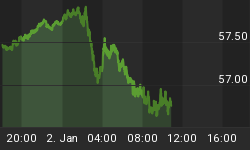The European economy is improving and could strengthen by year-end. Germany continues as the leading force, while Spain is growing at double the pace of the European average. The secular US dollar uptrend is intact, but could temporarily lose steam in the second part of 2015.
Spain is targeting fresh highs
There is finally some good news for the Eurozone. Despite geopolitical tensions at the Far East borders and reiterations of uncertainties in some southern countries, European retail sales rose almost 1.0% in the last quarter of 2014. Exports are increasing, while imports are marginally higher. In January, consumer confidence increased again and could support continued economic momentum in the second part of the year. A weaker Euro currency is beneficial, as well as low energy prices. Additionally, the decision of the European Central Bank (EBC) to implement extraordinary measures should boost demand. In March, the central bank will begin to buy EUR 60bn of private and public debt securities until September 2016. In reality, the entire Eurozone is showing signs of recovery, although growth remains uneven. For example, as Greece is once again on the brink of default, Germany can celebrate a new expansionary trend. Its Gross Domestic Product is growing above pre-recession levels. Germany is not alone, however. In France, it is just above pre-crisis standards. Spanish growth is also accelerating and will soon reach pre-crisis standards. Italy, in contrast, is underperforming, as the variegate government of Mr. Renzi, often engaged in disagreements, has not yet increased Italian consumer confidence.
The US economy is trending
Economic recovery in the US and Great Britain is also helping European sales. The latest data, from the US in particular, is showing that the GDP declined more than two points between the third and fourth quarter of 2014. A correction was expected after the almost 5.0% growth seen last year, which was mainly supported by government spending and strong exports. In reality, final sales to the private sector are robust. Spending was up 4.0% a quarter over the last three quarters of 2014. Overcapacity continues at a high rate, and inflation is still declining, which should limit wage growth for now. There are, nevertheless, a few challenges that might bring the European economy away from its recovery path. Russia is in recession, while China and Brazil are underperforming for now. Finally, Greece remains a ticking bomb that could go off at any moment. The Eurozone can survive Greece's exit, but the shock must be digested and world markets could then correct. The US dollar should uptrend for a few more years against major currencies, but could soften during the second part of this year to 93 and eventually 90 (US dollar index).
















